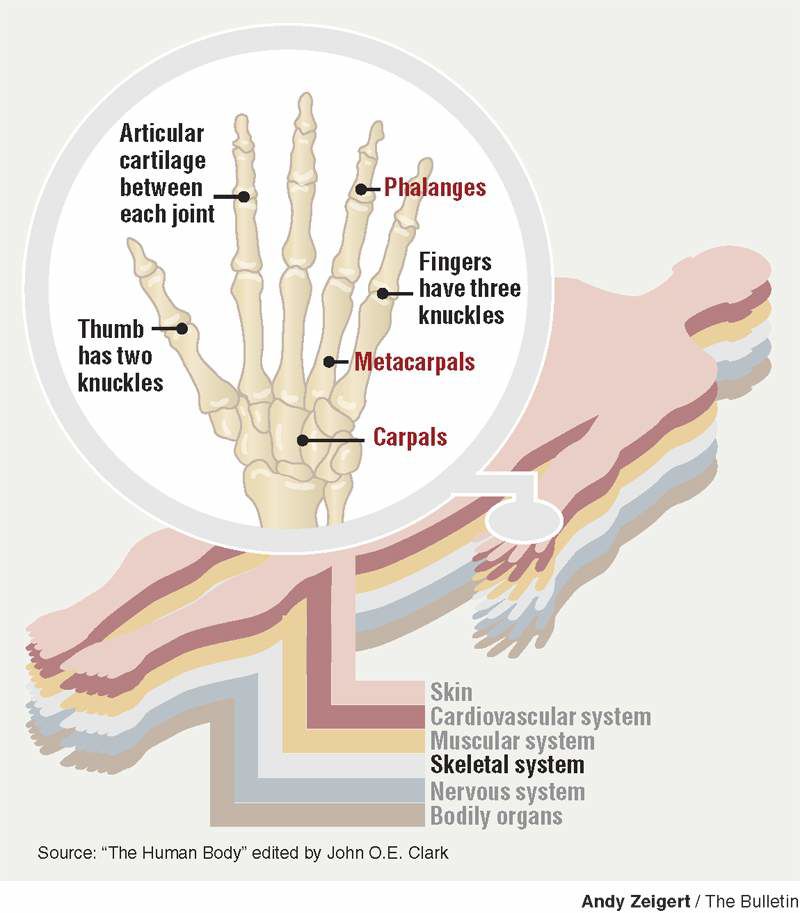Knuckles
Published 5:00 am Thursday, October 15, 2009

- Knuckles
Location: Knuckles are the joints in your fingers: a set of five where the fingers meet the back of the hand, another set of five in the middle of the fingers, and a set of four near the tips. The thumb has only two knuckles. The joints consist of articular cartilage, a white, shiny material on the end of bones, that allow the joint to move freely, as well as ligaments and tendons that keep the joint secure and prevent the finger from bending backward.
Function: Without the knuckle joints, we would not be able to grasp things like a baseball bat or a pencil, play the piano or text a message or shake hands.
Potential problems: Like all joints, the knuckles are subject to osteoarthritis, when the cartilage between the bones wears away. Finger joints are also commonly affected by rheumatoid arthritis, an immune system disorder that targets the cells that lubricate the joints.
Many people crack their knuckles, but there’s no proof that doing so can be damaging. Joints are covered by a capsule containing synovial fluid. A variety of gases are continuously dissolved in this fluid. When someone cracks his or her knuckles, the stretching of the capsule lowers the pressure inside the joint and creates a vacuum, which is filled by the gas dissolved in the fluid. This creates a bubble, which then bursts to create the cracking noise. It takes a while for these gases to dissolve into the fluid again, which is why knuckles can’t be cracked again for some time.
— Markian Hawryluk, The Bulletin
Sources: Johns Hopkins Arthritis Center, www.eOrthopod.com






